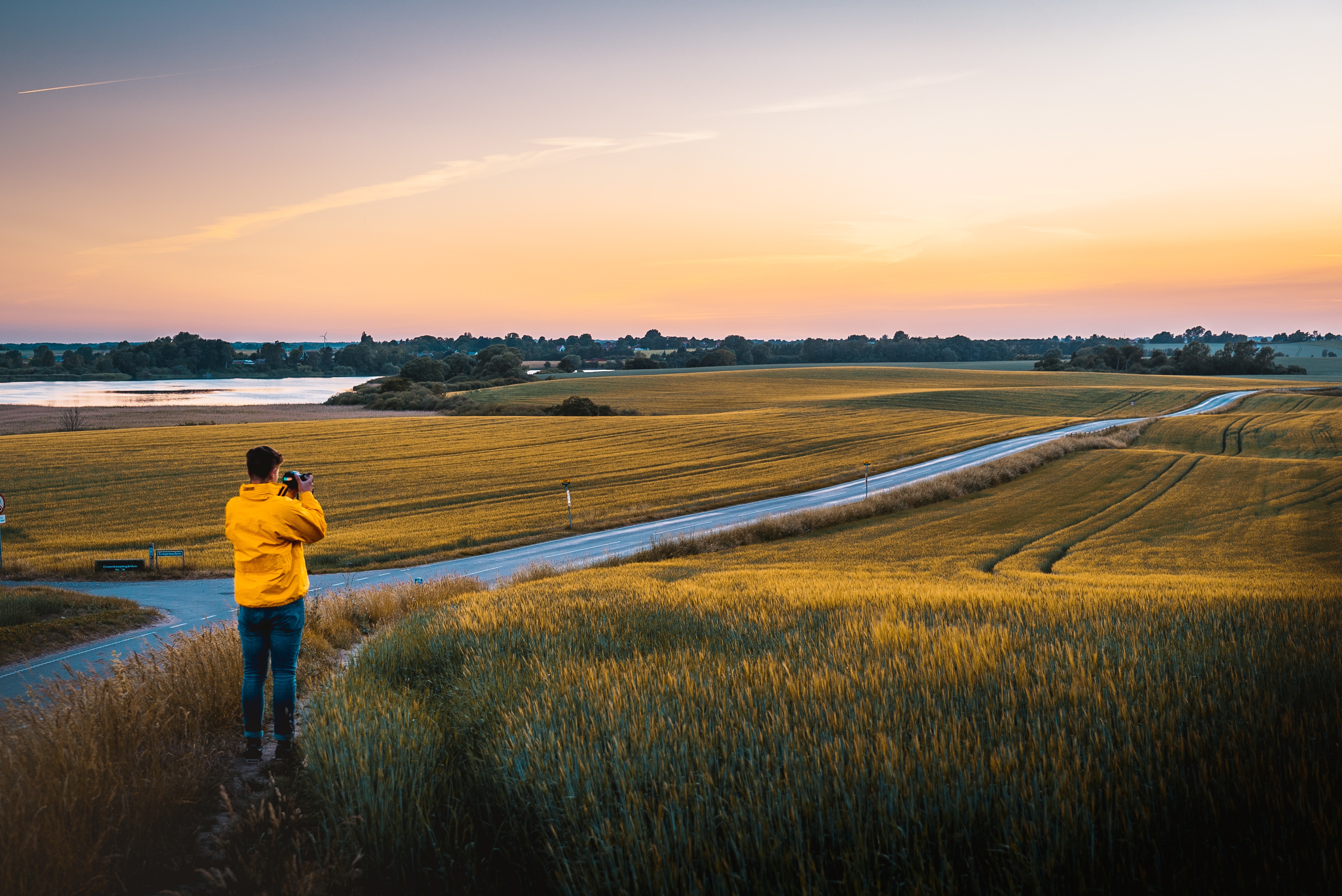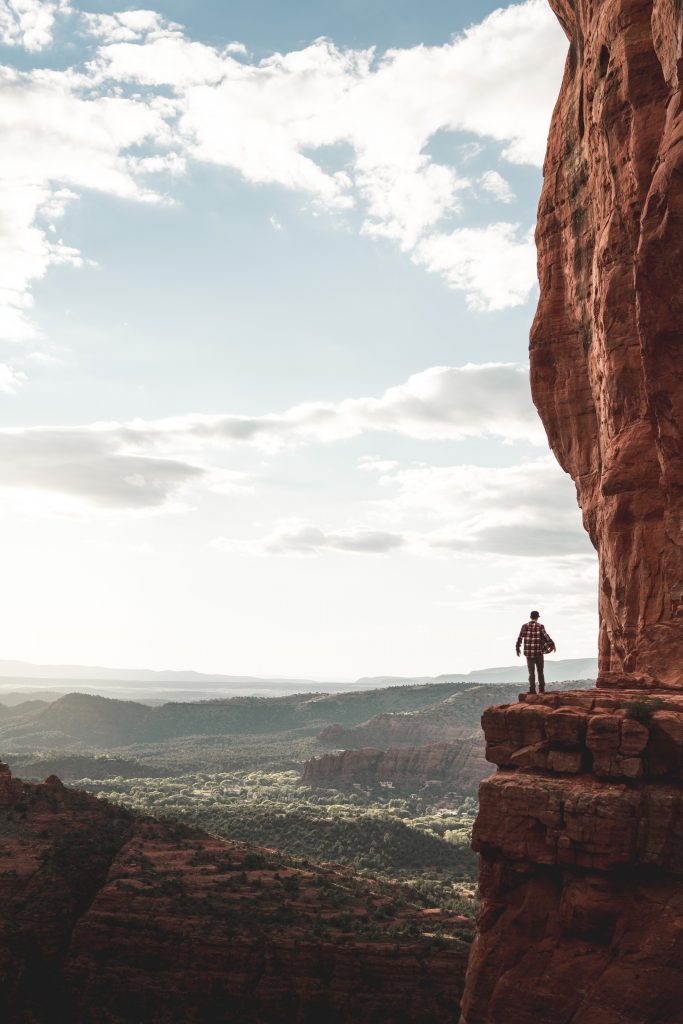For landscape photographers in particular, traveling is important to get new shots and find new scenes. While an impressive study can be made of staying in one place and using that as your only subject for a whole body of work, most photographers prefer to discover new places – and this may be essential if you find professional work in this field.
A photography holiday is an opportunity to travel for yourself and for fun, but also to see some of the most exciting photographic locations in the world. It comes with many challenges, as you will find for yourself when you start to plan for the first time. Here are the steps that you need to take in order to ensure that your photographic holiday will be a great experience.

photo by: Andreas Dress from Unsplash.com
Investigate Your Location
When you have decided on a place to visit, make sure that you carry out as many checks as possible to investigate where you will go. This will help you to avoid disappointment. Firstly, take a look at photographs that others have produced – you can do this simply by searching for the location in Google Images. What impresses you? What has already been done? At this stage, you may discover that your location is completely overdone. While it can be fun to add some shots of the Grand Canyon to your repertoire, it’s fairly likely that you won’t be able to come up with something that hasn’t been done many times over. If you’re fine with that, then proceed – but you may wish to find somewhere that you can produce something original.
The next step is to investigate the location from a practical angle. Is it legal for anyone to take pictures in your location, or do you need to pay for a permit? For example, you may be surprised to find that many of London’s parks require a fee to be paid if you want to take pictures there.
There are some parts of the world, particularly near holy sites, where it is not permitted to take pictures at all. Next, how close can you get? Where can you go around the location in order to get different views? Can you set up a tripod there? Will you need a zoom lens? Is it often crowded with tourists who may get in the way of your shot?
Finally, you want to get as much value out of your trip as possible, so look around the local area. Are there any more amazing photographic locations that you will be able to travel to easily from this base? Often, the best format for a photographic holiday is a road trip, where you can journey between key locations and stay in a different hotel every night. This will allow you to link up lots of great spots in one go, but always remember to look for the little-known gems that may be close by to famous views and could even be just as spectacular.
Choose Your Kit

photo by: Jeremy Bishop on Unsplash.com
Now that you know where you’re going to photographic, you have probably already picked up some information about the kind of kit that you will need. Are you taking one camera body or more? Will you want to take a camera that specializes in video footage in order to capture some clips as well as your photographs? What kind of lenses will you need to take, and how many?
Remember to be weather-appropriate: a lens hood for sunny weather, a waterproof cover for areas that are susceptible to rain, and so on. Then you also have to plan for eventualities: spare batteries and spare chargers, spare memory cards (and lots of them). You may also want to bring along a laptop for processing the images and an external hard drive to store them safely. In both cases, looking for more robust brands will help to protect those files.
Think about lighting: do you need fill-in flash or a whole lighting rig? A reflector or two? Softboxes and umbrellas? Will you need light stands and tripods? Is a generator or lighting battery pack going to be required? Will you need cleaning equipment, such as soft cloths and blowers, to get sand or dust out of your camera and lenses? Do you have protective covers you can use to minimise the chances of this happening?
You also need to think about how you are going to transport all of this. A very robust suitcase padded with foam will be a good choice for the flight, as you will likely need to store your equipment in the hold. This means you need to be sure that it will stand up to a bit of battering. But when you get to your location, do you want to be taking that heavy case everywhere you go? Or will it be better to pack a lightweight carrying solution?
Think also about how you will get to each spot you want to photograph. If you’re going to be fording streams or standing near waterfalls, waterproof gear is a must. If you’ll be climbing or walking tight passages, a backpack will leave your hands free. For long-distance hikes, a backpack is also the best choice for carrying the weight. A messenger bag will strain your shoulder more, so it’s not advisable if you want to hold the camera up later.
Get Your Papers
Next up, you need to make sure that you are covered in case of any eventuality. Check that you have the correct Visa if necessary, including checking that you don’t need to declare that you are a photographer. This will be particularly pertinent if your trip has been commissioned by another party. Make sure that you are allowed to enter the country with your equipment.
You will also need the right kind of coverage. Insurance is very important when traveling for photography, so make sure that your gear is totally covered for damage in the hold or during transit. You should also make sure that you have provisions in place in case something should happen to any item of your kit while you are away from home – such as having spares available. On this note, a little research may be pertinent to help you find the nearest camera rental outlets to where you will be staying, just in case. You may need coverage for third party injuries, such as if you were to accidentally hit someone with your tripod while packing away in a crowded tourist area, should they decide to take legal action.
Travel insurance for yourself should not be forgotten. When you’re climbing, wading, and jumping to get to hidden locations for that special shot, injuries can happen. The last thing that you want is to be far from home with no way to pay for medical help.
With all of this planning done, you should be free to enjoy your holiday. Don’t be too rigid with the shots that you aim to get and even the places you intend to visit. Breaking away from the normal ideas may allow you to find something really extraordinary that no one else has in their portfolio, so stay open to inspiration while you travel.